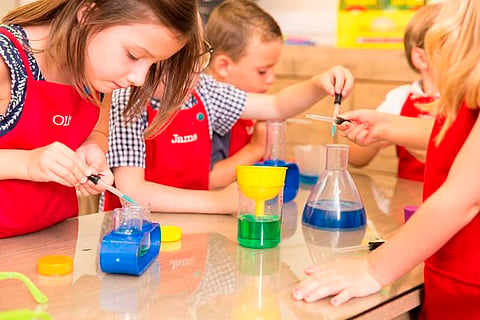
- Home
- Live Blog
- Breaking News
- Top Headlines
- Cities
- NE News
- Sentinel Media
- Sports
- Education
- Jobs

“I want to play, play, play,” our children yell and tell us so often about how sure they are about what they want to do. “Come on, let’s all go to the park and play,” we often tell our children and hear them scream in delight before we can complete the sentence. There is a wonderful weave which includes our little ones screaming with joy at the very thought of playing, and us parents enjoying and loving the joy we see on their faces.
In play, our children expand their understanding of themselves and others, their knowledge of the physical world, and their ability to communicate with peers and adults. By 6 months of age, our little ones have developed simple but consistent action schemes through trial and error and much practice. Infants use action schemes, such as pushing and grasping, to make interesting things happen- they will push a ball and make it roll in order to experience the sensation and pleasure of movement.
As our children master new motor abilities, simple schemes are coordinated to create more complex play sequences. Older infants will push a ball, crawl after it, and retrieve it. When infants of 9 months are given an array of objects, they apply the same limited actions to all objects and see how they react. By pushing various objects, infants learn that a ball rolls away, a top spins, and a rattle makes noise. At about 12 months, objects bring forth more specific and differentiated actions. At this age, children will throw or kick a ball, but will shake rattles.
In their second year, there is growing awareness of the functions of objects in the social world. The toddlers put a cup on a saucer and a spoon in their mouth. During the last half of this year, toddlers begin to represent their world symbolically as they transform and invent objects and roles. They may stir an imaginary drink and offer it to someone. We initiate and support such play. They may push a baby on a swing or cheer its first awkward steps. Children's responses regulate our actions. If the swing is pushed too high, their cries will guide us toward a gentler approach. In interactions with adults such as peekaboo, children learn to take turns, act with others, and engage others in play.
To our young ones, play is learning and learning is fun. Nature designed our children to learn through play because there is simply no other way for them to achieve all that they must achieve in their pre-school years, Unless our children went willingly and joyfully into learning, there is simply no way they can accomplish so much in the pre-school years. There is a wonderful name for this learning: its called play. Play comes naturally to our children, and at each stage in their development we will find them playing in the way that is best suited to the tasks that must be learned. We naturally want our children to reach their full potential, and this is best achieved by ensuring that their pre-school years are filled with fun.